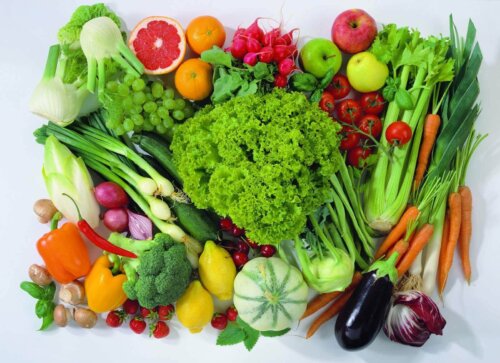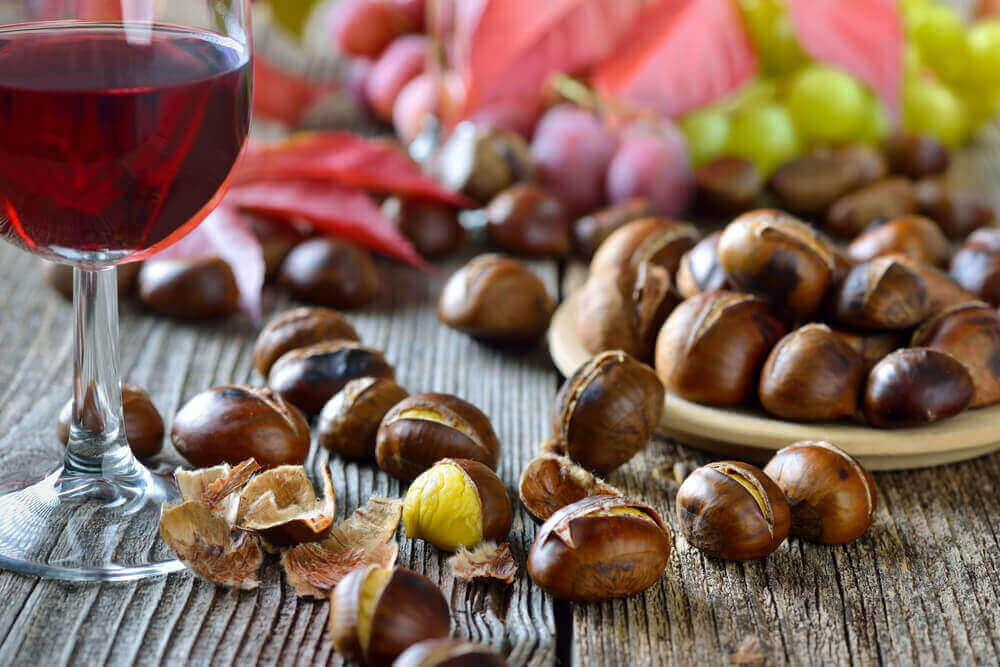Are There Foods We Shouldn't Mix With Others?

Have you ever had lentils for dinner and finished with yogurt for dessert? This combination isn’t really ideal as there are certain foods we shouldn’t mix with others.
This is because there are products that may contain “antinutrient” substances that can interfere with:
- Fats
- Proteins
- Vitamins
- Minerals
- Carbohydrates
Normally, we can find out what’s in processed foods by reading their nutritional composition, but fresh foods don’t always have a nutritional label. For this reason, in this article, we explain all about the foods we shouldn’t mix with others.
What are antinutrients?
Antinutrients are chemical substances that naturally occur in foods that interfere with, or directly inhibit, the body absorbing certain nutrients. It may be due to the fact they bond together forming compounds that end up being expelled by the body through feces, or because they inactivate or reduce the activity of the digestive enzymes.
We can find substances in foods that originate from vegetables, because they form part of the defense mechanisms of the vegetables against insects or other external problems.

What are these antinutrients?
We can mainly find antinutrients in vegetables, dried fruits, seeds, and cereals, although we can also find some in eggs, for example. The most common are as follows:
Phytic acid
Phytic acid is present in seeds, grains, dried fruits, and vegetables. They can affect the body’s absorption of zinc, iron, magnesium, copper, phosphorus, and calcium, according to a study published in the International Journal for Vitamin and Nutrition Research. It can also inhibit digestive enzymes, which are necessary to break carbohydrates and proteins into small parts.
Oxalic acid
Oxalic acid forms unabsorbable compounds with minerals like iron, magnesium, zinc, or calcium, all of which are present in food with vegetable origins like spinach, beets, or chard. We can find these in chocolate, spinach, and coffee.
We recommend you read: 7 Things You Should do Before Adopting a Vegan Diet
Goitrogenic substances
Goitrogenic substances reduce the body’s ability to absorb iodine from the diet; it’s present in cabbage, cauliflower, turnip, etc., although its activity reduces if you cook them. People that suffer from hyperthyroidism should take special care as iron forms part of the thyroid gland structure.
Trypsin and lecithin
Trypsin and lecithin are proteins found in legumes, mainly in white beans. They act as protease inhibitors, which cause protein digestion to slow down, according to a study published in the Journal of AOAC International.
Tannins
Tannins are present in wine and green tea. They have a chelating function given that they bind to certain metals like iron and zinc in order to be expelled through urine or feces.

You may also be interested in: Speed Up Your Metabolism with a Green Tea, Grapefruit and Mint Beverage
Which foods shouldn’t we mix with others?
Now that you know what antinutrients are and which foods contain them, it’s clear that there are some foods that shouldn’t be combined. This is because they reduce the body’s ability to absorb minerals or slow down the digestion process.
These are some examples of the most common combinations:
- Lentils, and then yogurt for dessert: As we’ve mentioned, legumes contain phytic acid, which makes it difficult for the body to absorb the calcium in yogurt. A better combination would be to have an orange or a kiwi for dessert because vitamin C helps the body to absorb the iron present in lentils.
- A glass of wine with a side of dried fruits/nuts: In certain areas, it’s normal that when you ask for a glass of wine, they’ll also bring you a bowl of nuts. However, the tannins present in the wine have a negative impact on the body’s ability to absorb iron and zinc, which are both present in nuts.
- Grilled spinach with cheese: Leafy green vegetables contain oxalates, which are a substance that reduces the body’s absorption of calcium in products like cheese and other dairy derivatives.
- White beans with meat: If you want to make a white bean stew, the best option would be to do it with vegetables because the trypsin and lecithin present in the beans make it difficult for the body to digest meat.
Before mixing foods, understand the antinutrient properties
Of course, the fact that there are antinutrients in some foods doesn’t mean you should stop eating them altogether. These foods, although they contain antinutrients, have many other health benefits.
Cooking and soaking foods are two basic techniques that help to inactivate antinutrients. It also helps to avoid certain combinations, as mentioned above! Bear this information in mind, especially if you suffer from any digestion problem, vitamin or mineral deficit, or an autoimmune illness. In these cases, visiting a dietitian or nutritionist is your best bet.
All cited sources were thoroughly reviewed by our team to ensure their quality, reliability, currency, and validity. The bibliography of this article was considered reliable and of academic or scientific accuracy.
- He W., Li X., Ding K., Li Y., Li W., Ascorbic acid can reverse the inhibition of phytic acid, sodium oxalate and sodium silicate on iron absorption in caco 2 cells. Int J Vitam Nutr Res, 2018. 88 (1-2): 65-72.
- Gilani GS., Cockell KA., Sepehr E., Effects of antinutritional factors on protein digesetibility and amino acid availbility in foods. J AOAC Int, 2005. 88 (3): 967-87.
This text is provided for informational purposes only and does not replace consultation with a professional. If in doubt, consult your specialist.









